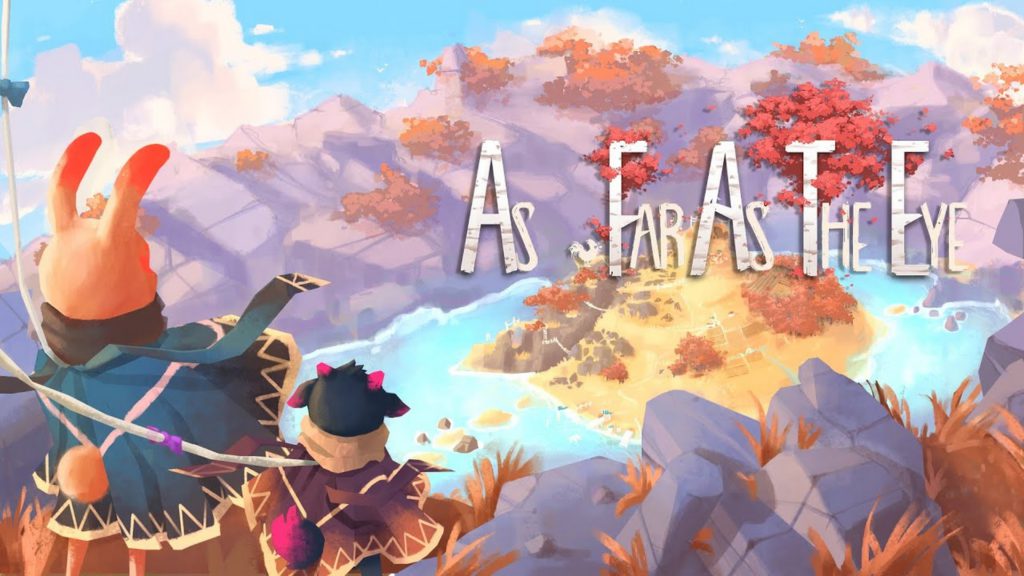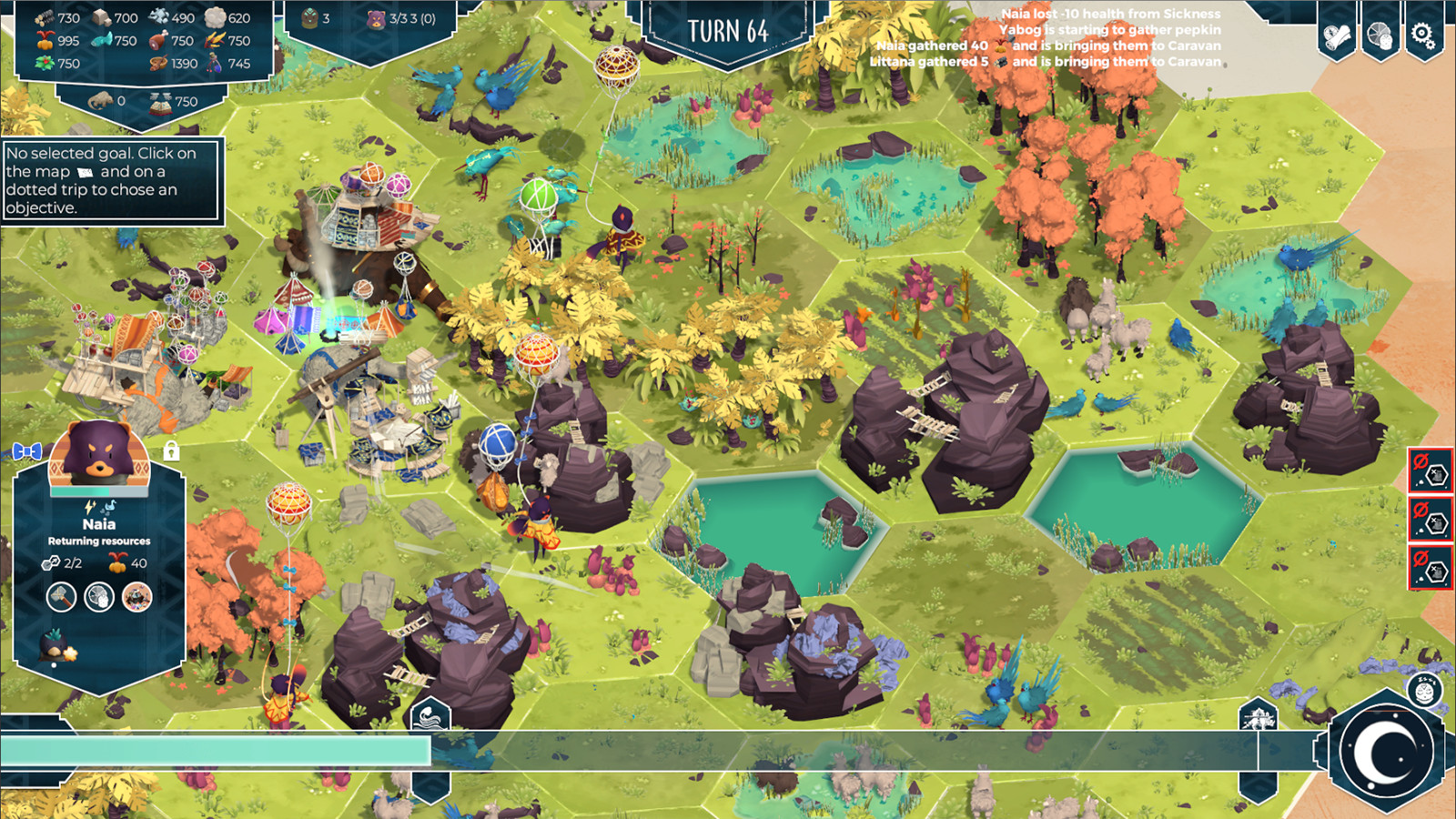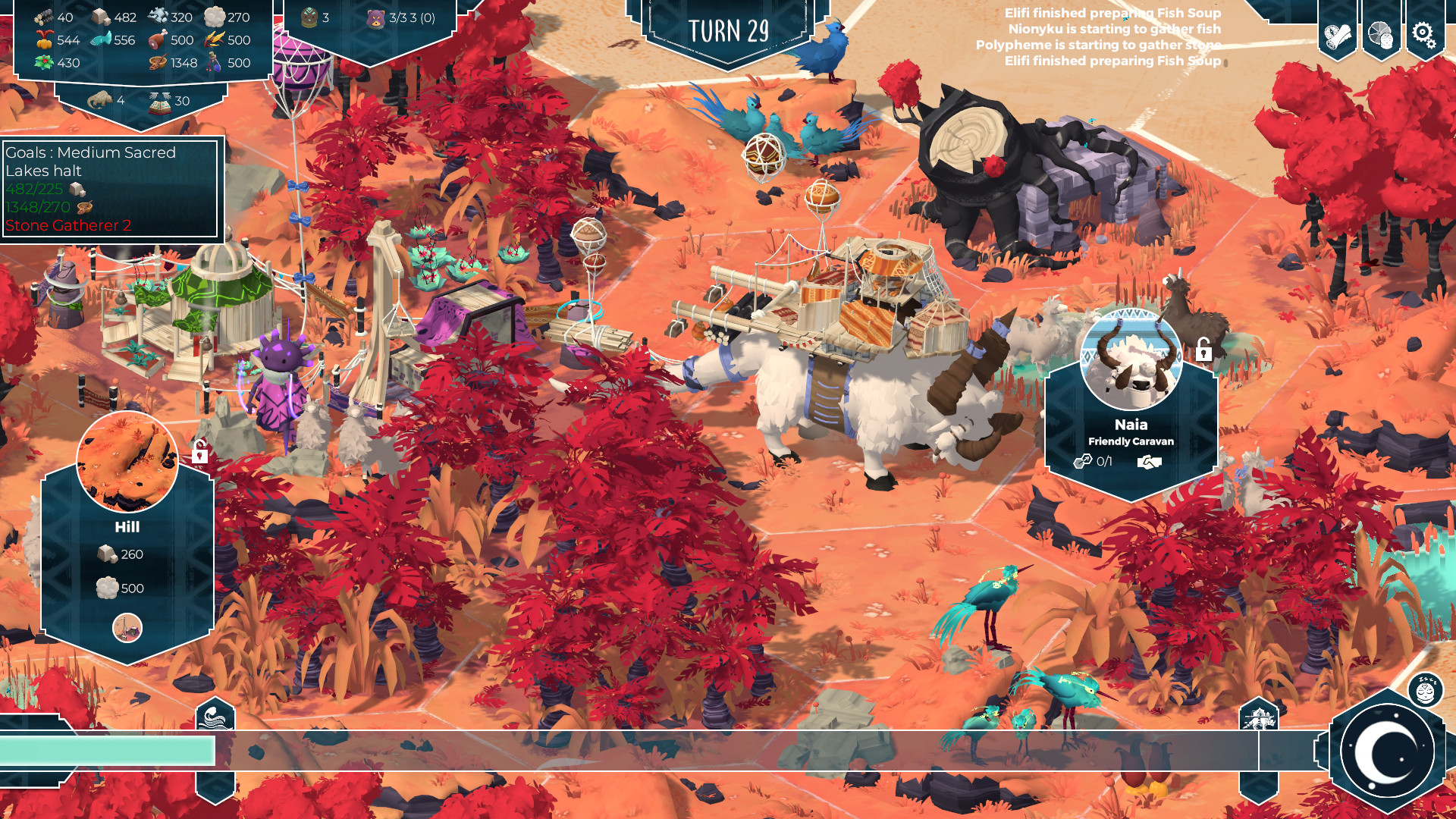
As far as ambitious cross-overs in video games go, we would normally think of the likes of Kingdom Hearts, with characters meshing with each other’s worlds. In the case of ‘As Far as the Eye’ is concerned, the fine people over at Unexpected Studios have meshed the genres of rogue-like with real-time strategy games, and a dash of role-playing mechanics to boot. With the leap to the Nintendo Switch, this mixed bag of affairs will be playable on the go as you must guide your tribes to the safe harbor of the Eye.
With so much at stake, the narrative is rather direct to the end goal of reaching the Eye. The journey to that goal, however, will shape your own tale time and time again. The world as your pupils knows it has once again come under threat of the rising tide that returns once every century. Taking control of the wind, you must guide them through the various halts, influencing the multitude of resource gathering and investments made, all while enduring the increasing dangers of Mother Nature. Where the rogue-like elements interject themselves comes the harsh reality that not all tribes will make it and if they fall, they will fall for good.
There were a few things on offer when I first logged in – Campaign, Quick Play, and Custom Games, all of which could be selected immediately. It is highly recommended that you jump into the campaign as your first time through, as it acts more like a tutorial rather than a campaign. Broken down into five manageable chapters, you will be introduced to the layout of the maps that are segmented into connecting hexagons. The game introduced me to the concept of pupils, all of which were modeled after an animal, in a neat little poncho I might add. It also gave me a rundown of how turns work to progress the game and how a poorly managed journey could turn belly up.

In a way, it felt like a reference to the board game, Catan, with the art style being reminiscent of an actual board game. Each tile would be blank until explored which would then reveal a 3D pop-up animated biome upon exploration. The more you explore, the more the play space became a living ecosystem with jungles and forests for wood harvesting and mountain and hill representations for stone gathering. The further you venture the more varied the environments with beasts to tame or spirits to communicate with, there was detail in every corner of each tile.
The entire experience was surprisingly serene, and the calming tones and melodies helped keep a level head while making decisions. It won’t break the bank graphically either, the colour scheme will vary depending on which ‘Halt’ you are exploring, but the overall charm factor remains high. The only issue I came across on the Switch version was in the handheld mode. Despite being a minimalistic design, it didn’t look particularly sharp and the words on the menu were very small, making it hard to read in either handheld or docked mode.
With the looming threat of the rising tide following you, it became essential to invest in your pupils. It starts off simply by selecting one of your pupils with the D-Pad, selecting the resource you want them to gather, and they will continue to collect until you tell them to stop, or they run out of material to collect. It then became a meta-game within the game itself to optimize the route and invest those materials to make a stationary building at a cheaper cost or build mobile ones that can travel with you, which are much more expensive. Since your pupils can only move three tiles per turn, building placement is crucial as after so many turns you need to pack and move on to the next Halt.

There was an interesting and rather in-depth talent wheel that can be upgraded per pupil that added to the investment of each run. Simple things such as gathering wood will only upgrade their gathering perks, whereas if they used the sawmill itself, they would gain experience as a woodcutter. The same can be said about branching off and building a bakery so you can make better food options – your hungry pupils consume 6 food materials per turn and can quickly lead to game over if they starve. All this leads to the goal of each location, once you reach the required materials to fix the bridge, for example, you will be able to either move on or continue to harvest at the risk of the weather catching up and wreaking havoc through Vagaries.
Vagaries are a blanket name for all the ailments you will face, coming in both minor and major forms. It could be something as simple as an idle pupil getting sick from boredom, a fire that will burn over a building for several turns, or a damaged path that adds an objective to your list to progress to the next Halt. These threats can push you to pack up and move sooner but only being able to take so many materials with you per Halt might sway your decision. Maybe you built a stationary building you want to use to level up with and produce better resources so the next Halt can get off to a flying start. Other times it is worth cutting your losses, as the longer you stay, the worse your pupils and movable buildings will be. It was a constant back and forth struggle on making the right choice.
As Far as the Eye was equally as brutal and it was clever. It always hurt when things fell apart, but it gave you that lingering feeling that a few tweaks would have you there. The Quickplay option with fixed scenarios was a nice challenge but the custom games will be the meat of the experience. Being able to adjust damn near everything can make each attempt as brutal or forgiving as possible.

The Good
- Board game art style was a pleasing experience
- Risk vs reward gameplay makes every run unique
- Calming music helps with problem solving
- Deep customization offers experimentation
The Bad
- On standard settings, Vagaries can be a brutal uphill battle
- Menu text was difficult to read in handheld mode








